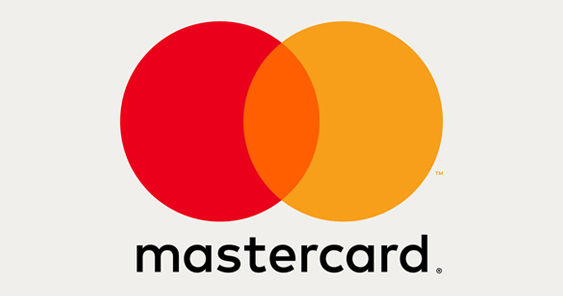SINGAPORE – Overall consumer confidence in Asia Pacific holds steady, showing stability in nine of the 17 markets, according to the Mastercard Index™ of Consumer Confidence (H1 2016) released today. With a negligible increase of 0.05 points in the overall score, Asia Pacific continues to sit just below the 60 point optimistic mark at neutral. The Index and its accompanying reports should not be interpreted as indicators of Mastercard’s financial performance.
Taiwan recorded the largest gain of 16.3 points to 45.3 points – a leap from ranking the lowest amongst the 17 markets in the previous survey in H2 2015 where it saw an extreme deterioration of greater than 20 points. Taiwan’s increase in score was backed by an improvement in all components, the largest coming from heightened expectations in stock market movements. After its recent elections in May, Philippines also saw a large improvement of 12.9 points to put it in extremely optimistic territory at 95.2 points which its highest level since the survey series on the Philippines began in 1995.
On the other hand, seven of the 17 markets saw a deterioration in confidence levels compared to H2 2015. The biggest decline in optimism levels was observed in Indonesia, followed by Hong Kong, and Singapore. According to the survey, prospects for employment was the key driver of the decline.
Between June and July 2016, 8,746 respondents, aged 18 to 64 in 17 Asia Pacific markets, were asked to give a six-month outlook on five economic factors including the economy, employment prospects, regular income prospects, the stock market and their quality of life. The Index is calculated on a scale of 0 to 100, with zero as the most pessimistic, 100 as the most optimistic and 50 as neutral.
Eric Schneider, senior vice president, Asia Pacific, Mastercard Advisors, said: “Overall consumer confidence in Asia Pacific has shown marginal change with some economies facing headwinds, but the region’s emerging markets including China, India, Vietnam, Myanmar and the Philippines remain resilient with consumers expressing optimism about economic prospects over the next six months. Even as emerging Asia continues to drive the region’s growth, governments and businesses need to ensure stability and strong fundamentals in order to weather future external shocks.”
Key APAC findings
Overall, consumer confidence in the Asia Pacific markets remains stable, increasing by just 0.05 points to 59.72 in H1 2016 from 59.67 points in H2 2015. The number of markets below the 50 neutral line remain the same (eight of the 17 markets) as the last survey.
Taiwan, which experienced extreme deterioration in consumer confidence in the previous survey recorded the largest improvement in the current survey. Philippines, India and Malaysia also saw improvements of at least 5 points.
The developing markets of India (97.6), Philippines (95.2), Vietnam (94.9) and Myanmar (99.8) remain extremely optimistic in their outlook.
Declines were recorded in seven out of 17 Asia Pacific markets, with significant deterioration seen in Indonesia (-14.7), Hong Kong (-12.4) and Singapore (-10.7). The decreases recorded in Hong Kong, Japan (-8.8) and Singapore moved these markets from neutral into pessimistic territory.
Country-level detail
India (97.6) solidified its position in extremely optimistic territory, posting a 7.5 points gain, while Malaysia (41.4) halted its two year slide with a 9.5 points improvement with increases across all five components and a more than 10 points gain in outlook on the Stock market (+12.4) and Quality of Life (+11.4).
Indonesia (61.8, -14.7) recorded the largest decrease in confidence levels of all 17 markets surveyed. While all five components saw declines, Employment (-26.9) and the Economy (-22.5) registered particularly large drops.
Hong Kong, which showed significant deterioration from six months ago, saw a decrease of 12.4 points to 32.1 and now has the lowest score in the region. All five components declined, with outlook on Employment (-20.9) contributing the most to the drop.
Singapore saw a -10.7 drop to 33.6. Three of the components fell by more than 10 points: Quality of Life (-14.5), Regular Income (-12.0) and Employment (-11.0).
Japan (38.0, -8.8) moves further into sub-50 territory, driven downwards by a 22 points decline in confidence in the outlook of the local Stock Market (35.9).Thailand continues its two year slide since H1 2014 with confidence in the Economy (-11.3) registering the largest decline among the five components in this survey.
While Australia and New Zealand remain in neutral territory, Australia recorded a slight drop of 0.1 points while New Zealand recorded an increase of 3.4 points, with improvements in outlook on Employment and Stock Market sentiment.
Vietnam (94.9, +0.7) and Myanmar (99.8, +4.0) remain in extremely optimistic territory, posting an increase in overall confidence, led by significant improvement in the Stock Market component (Property Market for Myanmar which does not have a stock market).
Consumer confidence in China (76.0) and Bangladesh (71.6), both previously in the optimistic territory, posted slight increases of 1.4 points and 4.3 points respectively, which shifted China from optimistic to very optimistic territory.
Sri Lanka (38.0) decreased by 4.2 points to dip into pessimistic territory, while South Korea (34.2), despite a 0.4 points increase, remained in pessimistic territory.
Mastercard Index of Consumer Confidence Data – H1 2016
|
|
| H1 2016 Current Status |
| Change from last half |
| ||||||
|
|
|
|
|
|
|
|
|
|
|
|
|
|
|
|
|
|
|
|
|
|
|
| ||
Asia Pacific |
|
| 59.72 |
|
| Neutral + |
| 0.05 |
|
| Stable + |
|
|
|
|
|
|
|
|
|
|
|
|
|
|
Australia |
|
| 42.2 |
|
| Neutral – |
| -0.1 |
|
| Stable – |
|
|
|
|
|
|
|
|
|
|
| |||
China |
|
| 76.0 |
|
| Very Optimistic |
| 1.4 |
|
| Stable + |
|
|
|
|
|
|
|
|
|
|
|
|
|
|
Hong Kong |
|
| 32.1 |
|
| Pessimistic |
| -12.4 |
|
| Significant |
|
|
|
|
|
|
|
| Deterioration |
| ||||
|
|
|
|
|
|
|
|
|
|
|
| |
|
|
|
|
|
|
|
|
|
|
|
|
|
India |
|
| 97.6 |
|
| Extremely |
| 7.5 |
|
| Some |
|
|
|
|
| Optimistic |
|
|
| Improvement |
| |||
|
|
|
|
|
|
|
|
|
|
| ||
|
|
|
|
|
|
|
|
|
|
|
|
|
Indonesia |
|
| 61.8 |
|
| Optimistic |
| -14.7 |
|
| Significant |
|
|
|
|
|
|
|
| Deterioration |
| ||||
|
|
|
|
|
|
|
|
|
|
|
| |
|
|
|
|
|
|
|
|
|
|
|
|
|
Japan |
|
| 38.0 |
|
| Pessimistic |
| -8.8 |
|
| Some |
|
|
|
|
|
|
|
| Deterioration |
| ||||
|
|
|
|
|
|
|
|
|
|
|
| |
|
|
|
|
|
|
|
|
|
| |||
Korea |
|
| 34.2 |
|
| Pessimistic |
| 0.4 |
|
| Stable + |
|
|
|
|
|
|
|
|
|
|
|
|
|
|
Malaysia | 41.4 | Neutral – | 9.5 | Some |
Improvement | ||||
|
|
|
| |
New | 55.4 | Neutral + | 3.4 | Stable + |
Zealand | ||||
|
|
|
| |
Philippines | 95.2 | Extremely | 12.9 | Significant |
Optimistic | Improvement | |||
|
|
| ||
Singapore | 33.6 | Pessimistic | -10.7 | Significant |
Deterioration | ||||
Taiwan | 45.3 | Neutral – | 16.3 | Significant |
Improvement | ||||
|
|
|
| |
Thailand | 58.2 | Neutral + | -8.5 | Some |
Deterioration | ||||
|
|
|
| |
Vietnam | 94.9 | Extremely | 0.7 | Stable + |
Optimistic | ||||
|
|
|
| |
Myanmar | 99.8 | Extremely | 4.0 | Stable + |
Optimistic | ||||
|
|
|
| |
Bangladesh | 71.6 | Optimistic | 4.3 | Stable + |
Sri Lanka | 38.0 | Pessimistic | -4.2 | Stable – |
| Index Score Current Status |
|
| Change in Index Points from last half | ||||||
|
|
|
|
|
|
|
|
|
|
|
| Lower Range | Upper | Qualitative Statement |
|
| Lower |
| Upper |
| Qualitative Statement |
| Range |
|
| Range | Range | |||||
|
|
|
|
|
|
|
| |||
| 0 | 10 | Extremely Pessimistic |
|
| -100 |
| -20 |
| Extreme Deterioration |
| 10 | 25 | Very Pessimistic |
|
| -20 |
| -10 |
| Significant |
|
|
|
|
| Deterioration | |||||
|
|
|
|
|
|
|
|
|
| |
| 25 | 40 | Pessimistic |
|
| -10 |
| -5 |
| Some Deterioration |
| 40 | 50 | Neutral – |
|
| -5 |
| 0 |
| Stable – |
| 50 | 60 | Neutral + |
|
| 0 |
| 5 |
| Stable + |
| 60 | 75 | Optimistic |
|
| 5 |
| 10 |
| Some Improvement |
| 75 | 90 | Very Optimistic |
|
| 10 |
| 20 |
| Significant |
|
|
|
|
| Improvement | |||||
|
|
|
|
|
|
|
|
|
| |
| 90 | 100 | Extremely Optimistic |
|
| 20 |
| 100 |
| Extreme Improvement |
Methodology
Respondents were asked five questions pertaining to their six-month outlook on the economy, their employment prospects, the local stock market, their regular income prospects, and their quality of life. The results of their responses were converted in five component indexes which were subsequently averaged to form the Mastercard Index of Consumer Confidence (MICC) score. The MICC Index score and the 5 component index scores range from 0 – 100 where 0 represents maximum pessimism, 100 represents maximum optimism and 50 represents neutrality.
About the Mastercard Index™ of Consumer Confidence
The Mastercard Index™ of Consumer Confidence survey has a 20-year track record of consumer confidence indices collected from over 200,000 interviews, unequalled both in scope and history across Asia Pacific.
It is the most comprehensive and longest running survey of its kind in the region. In June 1997, the Index revealed a decline in consumer confidence – one month prior to the devaluation of the Thai baht that triggered the regional economic crisis. In June 2003, the Index score for Employment in Hong Kong dropped to a low score of 20.0. This was subsequently reflected in Hong Kong’s unemployment rate, which peaked just before September 2003 at eight percent.
The survey began in the first half of 1993 and has been conducted twice yearly since. Seventeen Asia Pacific markets now participate in the survey: Australia, Bangladesh, China, Hong Kong, India, Indonesia, Japan, Malaysia, Myanmar, New Zealand, Philippines, South Korea, Singapore, Taiwan, Thailand and Vietnam.
Mastercard and its Suite of Research Properties
The Mastercard Index suite in Asia Pacific includes the long-running Mastercard Index of Consumer Confidence, as well as the Mastercard Index of Women’s Advancement, Mastercard Index of Financial Literacy, and the Mastercard Index of Global Destination Cities. In addition to the indices, Mastercard’s research properties also include a range of consumer surveys including Online Shopping, Ethical Spending and a series on Consumer Purchasing Priorities (covering Travel, Dining & Entertainment, Education, Money Management, Luxury and General Shopping).








